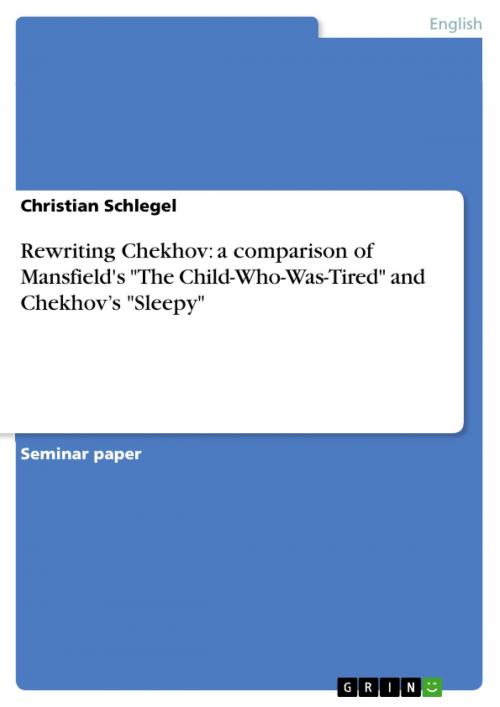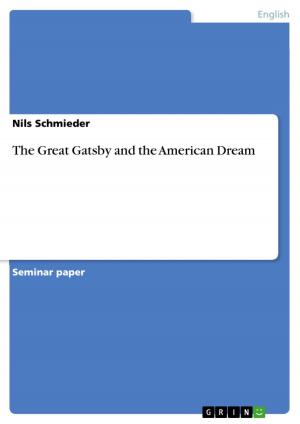Rewriting Chekhov: a comparison of Mansfield's 'The Child-Who-Was-Tired' and Chekhov's 'Sleepy'
Fiction & Literature, Literary Theory & Criticism, British| Author: | Christian Schlegel | ISBN: | 9783638827980 |
| Publisher: | GRIN Publishing | Publication: | July 23, 2007 |
| Imprint: | GRIN Publishing | Language: | English |
| Author: | Christian Schlegel |
| ISBN: | 9783638827980 |
| Publisher: | GRIN Publishing |
| Publication: | July 23, 2007 |
| Imprint: | GRIN Publishing |
| Language: | English |
Seminar paper from the year 2001 in the subject English Language and Literature Studies - Literature, grade: 2,3, Johannes Gutenberg University Mainz (Fachbereich Englische Philologie), course: Proseminar 'Katherine Mansfield', 10 entries in the bibliography, language: English, abstract: This paper will discuss differences and similarities of The Child-Who-Was-Tired first published on February 24 in the New Age and later, short after her return from Bavaria, in 'In a German Pension' published in 19112 by Katherine Mansfield and Anton Chekhov's Sleepy, which was written nearly 20 years earlier3. The parallels between the characters and the plots, especially in the outcome of both short stories, make Katherine Mansfield suspicious of having committed plagiarism. 'Anton Chekhov's short stories were first welcomed in England and America just after the turn of the century as examples of late nineteenth-century realism [...].' Characterised as 'slices of life' they could have served as patterns or examples for Mansfield's stories, which are characterised in the same way. In so far she writes at least in Chekhov's tradition. She 'could have read Sleepy at Queen's College as early as 1903, when [...] her literary interest was expending.' The question of plagiarism will be answered in the conclusion of this paper, when the differences and similarities are worked out properly.
Seminar paper from the year 2001 in the subject English Language and Literature Studies - Literature, grade: 2,3, Johannes Gutenberg University Mainz (Fachbereich Englische Philologie), course: Proseminar 'Katherine Mansfield', 10 entries in the bibliography, language: English, abstract: This paper will discuss differences and similarities of The Child-Who-Was-Tired first published on February 24 in the New Age and later, short after her return from Bavaria, in 'In a German Pension' published in 19112 by Katherine Mansfield and Anton Chekhov's Sleepy, which was written nearly 20 years earlier3. The parallels between the characters and the plots, especially in the outcome of both short stories, make Katherine Mansfield suspicious of having committed plagiarism. 'Anton Chekhov's short stories were first welcomed in England and America just after the turn of the century as examples of late nineteenth-century realism [...].' Characterised as 'slices of life' they could have served as patterns or examples for Mansfield's stories, which are characterised in the same way. In so far she writes at least in Chekhov's tradition. She 'could have read Sleepy at Queen's College as early as 1903, when [...] her literary interest was expending.' The question of plagiarism will be answered in the conclusion of this paper, when the differences and similarities are worked out properly.















